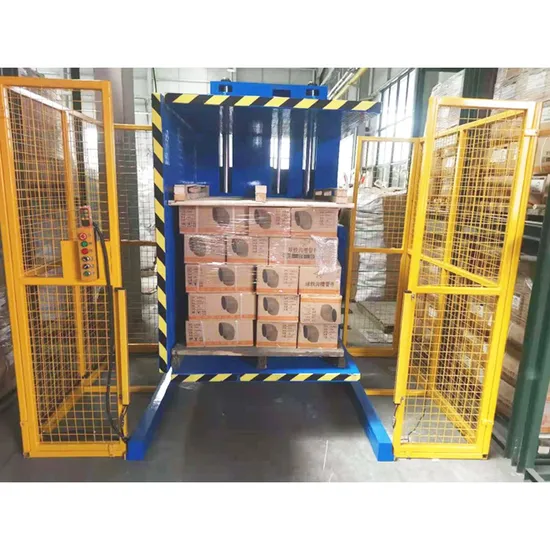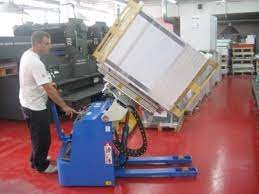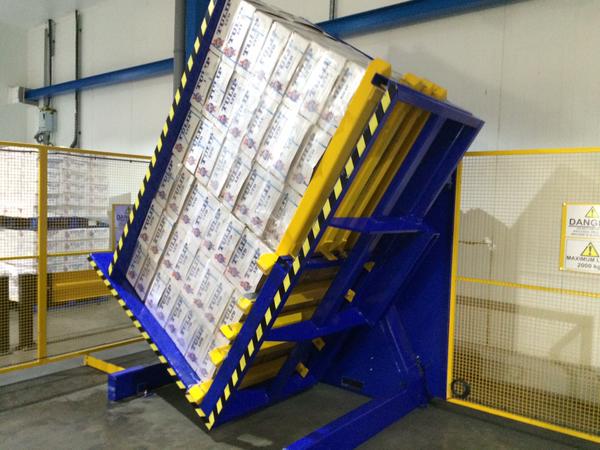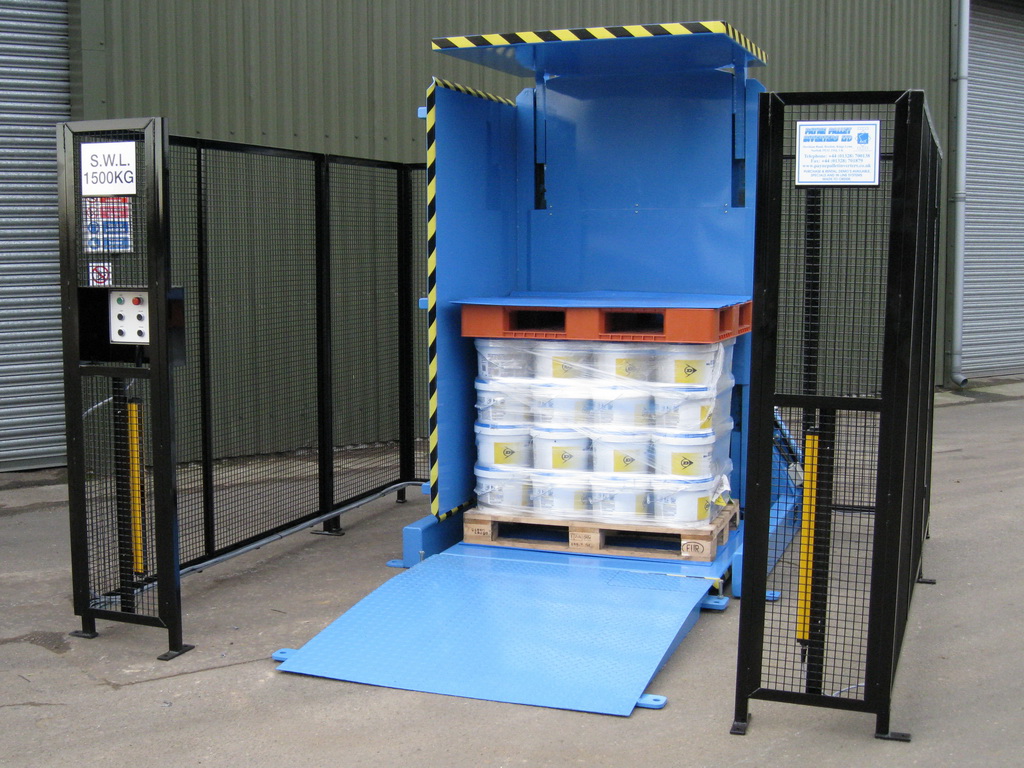What’s the ROI of Automated Pallet Changing Machines in Thailand's manual Sector?
Many factory owners I speak with in Thailand face a similar problem. Your production line is efficient, your products are high quality, but your final packing and logistics are slowing everything down. You rely on teams of workers to manually transfer goods from one pallet to another. This process is slow, physically demanding, and a major source of product damage. You see the costs adding up every day in labor, damaged goods, and production bottlenecks, and you know there has to be a better way. This manual system is holding your business back, creating a weak link in an otherwise strong chain. It's a constant source of worry, affecting your ability to scale and compete.
The return on investment (ROI) for an automated pallet changing machine in Thailand's manual-heavy sectors is typically realized within 12 to 24 months. This rapid payback comes from direct savings in labor costs, a significant reduction in product damage, and increased operational throughput. For businesses running multiple shifts, the ROI can be even faster, often under a year. This investment directly tackles key operational inefficiencies and turns a cost center into a source of productivity.

I’ve been in the packaging machine industry for a long time, first as an engineer on the factory floor and now as the owner of SHJLPACK. I’ve seen firsthand how a single, smart investment can change everything for a business. It’s not just about buying a new machine; it's about solving a core problem. You need to look beyond the initial price tag and understand the full financial impact. In this article, I want to break down the real ROI of an automated pallet changer for you. We'll look at the obvious savings and the hidden benefits, so you can make an informed decision for your factory.
How Do You Calculate the Direct Cost Savings from an Automated Pallet Changer?
You see the daily expense of your manual pallet changing team. You know it’s high, but pinning down the exact number to justify a new machine can feel complicated. You might worry that you'll miss a critical factor in your calculation, making the investment look better or worse than it really is. This uncertainty can lead to hesitation, while the hidden costs of your current manual process continue to drain your profits month after month. What you need is a clear, simple framework to see the real numbers.
The most significant direct cost savings from an automated pallet changer come from three key areas: a drastic reduction in labor expenses, the near-elimination of product damage during transfer, and lower overall logistics costs by being able to use cheaper, in-house pallets instead of expensive export-grade ones. These savings are measurable, immediate, and form the foundation of your ROI calculation.

When I help clients analyze this investment, we don't use complicated formulas. We look at the practical, day-to-day costs you are already paying. The goal is to compare your current reality with the future state. An automated pallet changer, or pallet inverter, doesn't just replace a task; it optimizes an entire process. It’s one of the most straightforward investments in terms of calculating returns because the savings are so direct. Let’s dive deeper into these three areas so you can build your own business case.
Deconstructing the Direct Savings
Calculating the ROI starts with the most obvious and largest expense: labor. But it goes deeper than just wages. You have to consider the full cost of an employee. Then, we need to look at costs you might have accepted as "just part of business," like product damage.
Labor Cost Reduction
In a typical manual operation in Thailand, you might need a team of 2 to 4 workers to handle pallet changing. They spend their entire shift lifting, moving, and re-stacking goods. An automated pallet changer requires only one operator, and their job is mostly supervisory. They load the pallet with a forklift, press a button, and unload it. The machine does all the heavy work. This immediately reduces your labor requirement for this task by 50% to 75%.
Let's look at a simple comparison.
| Cost Factor | Manual Team (3 Workers) | Automated System (1 Operator) |
|---|---|---|
| Annual Wages | ฿540,000 (฿15,000/mo x 3 x 12) | ฿180,000 (฿15,000/mo x 1 x 12) |
| Social Security & Benefits (approx. 10%) | ฿54,000 | ฿18,000 |
| Overtime/Replacement Worker Costs | High (due to fatigue/injury) | Low (machine is consistent) |
| Annual Training Costs | Moderate (high turnover) | Low (one-time training) |
| Total Estimated Annual Labor Cost | ฿600,000+ | ฿200,000 |
This simple table shows an annual saving of at least ฿400,000 just on direct labor. A client of mine in the food and beverage industry saw their labor savings pay for almost half the machine in the first year alone.
Product Damage Prevention
Manual handling is inconsistent. Workers get tired. A moment of carelessness can lead to a dropped box, a crushed carton, or a full pallet tipping over. I have visited countless warehouses where a corner is dedicated to damaged goods waiting to be written off. This is a direct loss of profit. An automated pallet changer handles every load with the same gentle, controlled motion. It clamps the load securely before tilting or inverting it, reducing the risk of damage to nearly zero.
If your operation sees even a 1% product damage rate due to manual handling, and you move ฿5,00__0,000 worth of goods a month, that's ฿50,000 in monthly losses, or ฿600,000 a year. This is pure waste that automation can eliminate.
Pallet Cost Optimization
Many companies in Thailand that export goods must use expensive, heat-treated (ISPM 15) wooden pallets or durable plastic pallets. These can cost many times more than simple, in-house wooden pallets. But you don't need these expensive pallets for internal storage and movement. A pallet changer allows you to easily switch finished goods from cheap internal pallets to expensive export pallets right before shipping. You keep your expensive assets from getting lost or damaged. The savings here are substantial. If you ship 20 pallets a day and save ฿300 per pallet by using cheaper ones internally, that's a saving of ฿6,000 per day.
What Are the Hidden Costs and Benefits Affecting the ROI Calculation?
You've calculated the direct savings on labor and damaged goods. The numbers look promising. But you are a practical business owner, like me. You know that no investment is that simple. You're wondering, what am I missing? What are the hidden costs of installation, training, or maintenance? And on the other side, are there hidden benefits that could make the ROI even better than I think? Ignoring these factors can lead to an incomplete picture, and I built my business on making sure my clients see the whole picture.
The true value of an investment is often found in the details beyond the initial quote. Hidden factors that affect your ROI include the initial setup costs and operator training, but also powerful benefits like increased throughput speed, better hygiene compliance, and even lower insurance premiums. These indirect elements can significantly shorten your payback period and deliver long-term strategic advantages.

When I was starting my own factory, I learned that the most successful investments were the ones where I understood all the ripple effects. A new machine doesn't just sit in a corner; it interacts with your entire operation. It can remove bottlenecks you didn't even realize were slowing you down. It can improve the work environment in ways that lead to better employee retention. Let's explore these hidden costs and benefits, so you can move forward with confidence, knowing you’ve considered every angle.
Uncovering the Full Picture
To make a truly informed decision, like the ones my client Javier Morales in the steel industry makes, you have to perform a rigorous analysis. He looks at every investment from all sides. Let’s do the same here.
The "Hidden" Costs (Which Are Really Just Part of the Plan)
I don't like to call these "hidden" costs because a good supplier will be transparent about them. They are part of the total investment.
- Installation and Commissioning: The machine needs to be installed correctly, integrated into your production line, and tested. This is a one-time cost. At SHJLPACK, we see this as part of delivering a total solution, not just a box.
- Operator Training: Your team needs to learn how to operate and maintain the new equipment safely. This is a crucial investment. A well-trained operator ensures the machine runs efficiently and lasts for years. This is far less of a recurring cost than constantly training new manual laborers due to high turnover.
- Maintenance and Spares: Like any machine, a pallet changer requires routine maintenance. This includes things like hydraulic fluid checks, sensor cleaning, and having a few critical spare parts on hand. However, these planned costs are tiny compared to the unplanned costs of worker injuries or large-scale product damage from a manual process. A good machine is designed for reliability, just like the ones we build.
The Powerful Hidden Benefits
These are the factors that often get overlooked in a simple ROI calculation but deliver immense value. They align directly with the goals of forward-thinking leaders like Javier, who aim for higher efficiency and digitalization.
- Increased Throughput and Reduced Downtime: A manual team might take 5-10 minutes to change a pallet. An automated machine does it in 60-90 seconds. Consistently. This speed eliminates a major bottleneck at the end of your production line. If your line has to pause while waiting for the manual team to clear the area, that is expensive downtime. By speeding up this final step, you can increase the overall output of your entire factory, pushing your capacity utilization higher.
- Improved Hygiene and Safety Compliance: In industries like food, beverage, and pharmaceuticals, hygiene is critical. Manual handling increases the risk of contamination. An automated system is a closed, clean process. It also drastically reduces workplace accidents. This leads to fewer compensation claims and potentially lower insurance premiums. It shows your commitment to a safe, modern workplace.
- Enhanced Operational Flexibility: A pallet changer gives you more control. You can easily switch between different pallet types (wood, plastic, metal) and sizes. This allows you to meet the specific requirements of different customers without re-configuring your entire line. This flexibility is a competitive advantage.
| Hidden Factor | Negative Impact (Manual) | Positive Impact (Automated) |
|---|---|---|
| Throughput Speed | Bottleneck, line stops, variable timing | Consistent 60-90 sec cycle, higher output |
| Workplace Safety | High risk of back injuries, accidents | Near-zero risk of lifting injuries |
| Hygiene | High risk of contamination | Clean, enclosed process, better compliance |
| Flexibility | Difficult to switch pallet types | Easily switch between wood, plastic, etc. |
| Employee Morale | Physically draining, high turnover | Safer, higher-skilled jobs, better retention |
Thinking about these factors gives you a strategic view of the investment, not just a financial one.
How Does Automation Impact Worker Safety and Productivity in Thailand?
A common concern I hear from factory owners is about their people. You have loyal workers who have been with you for years. The idea of bringing in a machine to do their job can feel wrong. You worry that automation means getting rid of your workforce. But the reality of manual pallet handling is harsh. It's back-breaking work that leads to chronic pain, sudden injuries, and high employee turnover. You are constantly dealing with absences, workers' compensation claims, and the challenge of finding new people willing to do such physically demanding labor.
Automation is not about replacing workers; it's about elevating them. It transforms a dangerous, low-skill job into a safe, higher-value role. By investing in an automated pallet changer, you protect your employees from injury, improve their job satisfaction, and unlock new levels of productivity that a manual team could never consistently achieve. This is how you build a stronger, more resilient team for the future.

I am passionate about this because my own success is built on the hard work of factory employees. My goal now is to share my knowledge to make their work safer and more meaningful. When you automate a dangerous task, you are not taking away a job; you are removing a hazard. You free up your people to use their minds, not just their muscles. They can be retrained as machine operators, quality control inspectors, or maintenance technicians—roles that are more engaging and valuable to your company's growth. Let's look at how this transition positively impacts both your people and your performance.
A New Role for Your Workforce
The introduction of automation is a chance to upskill your team and create a more modern work environment. It's a change, but it's a positive one that benefits everyone.
Creating a Safer Work Environment
Manual material handling is one of the leading causes of workplace injuries globally. In Thailand, musculoskeletal disorders from lifting heavy loads are a major concern for the labor force. These injuries are not just statistics; they represent real pain and hardship for your employees and real costs for your business.
- Medical Costs: The direct cost of treating a back injury can be substantial.
- Lost Time: An injured worker may be out for weeks or months, and you have to find and train a replacement.
- Insurance Premiums: A high accident rate will lead to higher workers' compensation insurance premiums.
- Morale: An unsafe work environment leads to fear and low morale, which impacts overall productivity.
An automated pallet changer removes the primary cause of these injuries: the manual lifting of heavy, repetitive loads. I remember a client in the chemical industry who was experiencing at least one major back injury claim per year. After installing a pallet inverter, their injury rate for that task dropped to zero. The machine paid for itself in two years just from the savings on insurance and lost time.
From Manual Laborer to Skilled Operator
What happens to the workers who used to lift the boxes? They get a promotion. They become machine operators. This is a fundamental shift in their role.
- Less Physical, More Mental: Instead of strenuous physical labor, their job becomes about overseeing a process. They learn to operate the HMI (Human-Machine Interface), perform basic quality checks, and ensure the workflow is smooth.
- Increased Responsibility and Value: As a skilled operator, their value to the company increases. They are no longer just a pair of hands; they are the guardians of a critical piece of equipment. This leads to greater job satisfaction and pride in their work.
- Path for Growth: This new role can be a stepping stone. A good operator can be trained in basic maintenance, troubleshooting, or even programming, creating a career path within your company. This is how you retain good people.
Quantifying the Productivity Boost
Beyond safety, there is a clear productivity gain. Humans are not machines. Our pace varies. A manual team might be fast at the start of a shift but will slow down as fatigue sets in. A machine works at the same, optimal pace all day, every day.
| Performance Metric | Manual Team (3 Workers) | Automated System (1 Operator) |
|---|---|---|
| Pallets per Hour (Peak) | 12-15 | 40-60 |
| Pallets per Hour (Avg. over 8hr shift) | 8-10 | 40-60 |
| Consistency | Variable (depends on fatigue) | 100% Consistent |
| Errors / Damage | Occasional | Near Zero |
This table shows that an automated system is not just faster; it's reliably faster. This predictability is crucial for production planning and meeting tight deadlines. You can confidently promise your customers a certain output because you have removed the human variability from a key process.
What's the Typical Payback Period for a Pallet Changer in a Thai Factory?
You've seen the direct savings, understand the hidden benefits, and appreciate the impact on safety and productivity. Now it comes down to the final, critical question for any business owner: when do I get my money back? You need a concrete number to take to your finance department or to weigh against other potential investments. A vague answer of "it's a good investment" is not enough. You're dealing with real capital, and you need to know the timeline for its return.
The typical payback period for an automated pallet changer in a Thai factory operating at least one full shift is between 12 and 24 months. For high-volume operations, especially those running two or three shifts, I have seen this payback period shrink to as little as 6 to 9 months. This makes it one of the faster ROI capital investments you can make in your facility.

This isn't just a theoretical number. It's based on my experience working with factories across various industries in Southeast Asia. The calculation is straightforward and based on the real-world costs you are already incurring. The key is to see the machine not as a purchase, but as a replacement for existing, ongoing expenses. Once the machine is paid for, those savings turn directly into profit for years to come. Let's walk through a specific case study to see exactly how these numbers play out.
Your Path to Profitability
The payback period is a simple calculation: Total Investment Cost divided by Total Monthly Savings. Let's build a realistic example for a mid-sized factory in Thailand.
Factors Influencing Your Specific Payback Period
The 12-24 month range is an average. Your specific payback period will depend on several key variables:
- Number of Shifts: This is the biggest factor. A machine running three shifts a day will pay for itself three times as fast as a machine running one shift, because the labor and productivity savings are continuous.
- Local Labor Costs: Wages and benefits vary across different regions of Thailand. The higher your labor costs, the faster the payback.
- Volume of Pallets: The more pallets you transfer per day, the more savings you accumulate from speed and damage prevention.
- Cost of Product Damage: If you handle high-value goods, the savings from preventing damage will be a much larger part of the calculation.
- Machine Cost: The initial investment for the pallet changer itself. At SHJLPACK, we offer various models to fit different needs and budgets, ensuring the solution matches the scale of the problem.
Sample Payback Calculation: A Case Study
Let's imagine a food processing factory in the Rayong province, running two shifts a day.
Initial Investment:
- Cost of Automated Pallet Changer: ฿1,500,000
- Installation & Training: ฿100,000
- Total Initial Investment: ฿1,600,000
| Monthly Savings Calculation: | Savings Category | Calculation | Monthly Savings |
|---|---|---|---|
| Labor Savings | (4 manual workers - 1 operator) x ฿18,000/mo total cost per worker | ฿54,000 | |
| Product Damage Reduction | 0.5% of ฿8,000,000 monthly product value | ฿40,000 | |
| Throughput Gain (Downtime Reduction) | 2 hours/day saved x 22 days x ฿1,000/hr line cost | ฿44,000 | |
| Pallet Cost Savings | Not applicable in this specific food case | ฿0 | |
| Total Monthly Savings | ฿138,000 |
Payback Period:
- Total Investment / Total Monthly Savings = Payback Period
- ฿1,600,000 / ฿138,000 = 11.6 months
In this realistic scenario, the factory owner would see a full return on their investment in less than one year.
Beyond Payback: A Long-Term Strategic Asset
The most important point is what happens after month 12. From that point forward, the machine is generating ฿138,000 in pure profit every single month. These machines are built to last for 15-20 years. This isn't just a short-term fix; it's a long-term strategic asset that will improve your profitability, safety, and competitiveness for a decade or more. It is a foundational step in modernizing your operations.
Conclusion
Investing in an automated pallet changer is not a cost. It is a strategic move towards greater efficiency, enhanced worker safety, and significantly higher long-term profits for your Thai operation.



